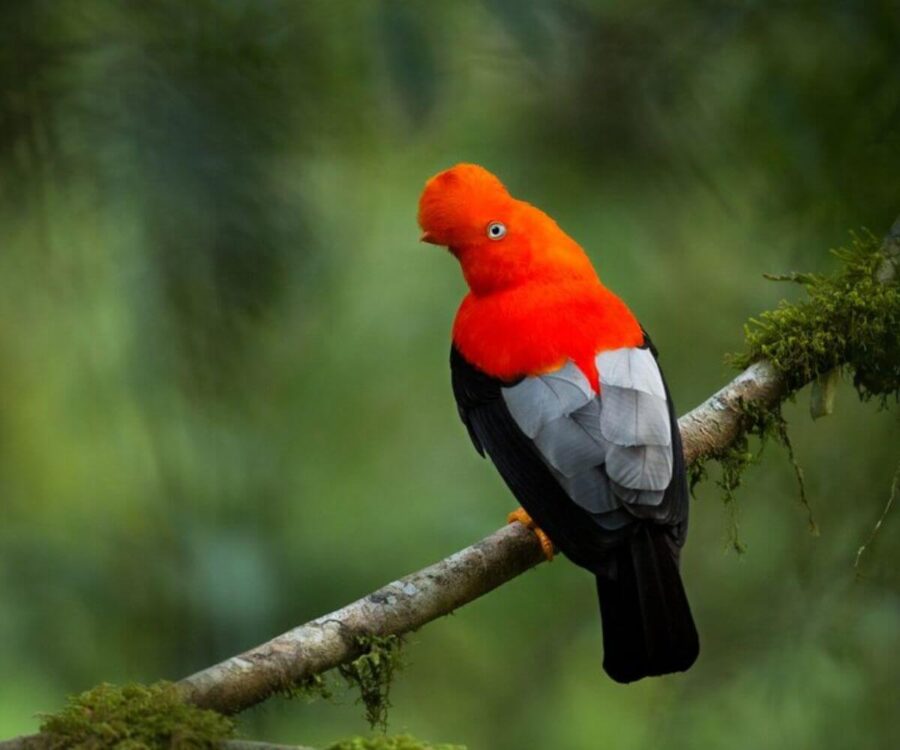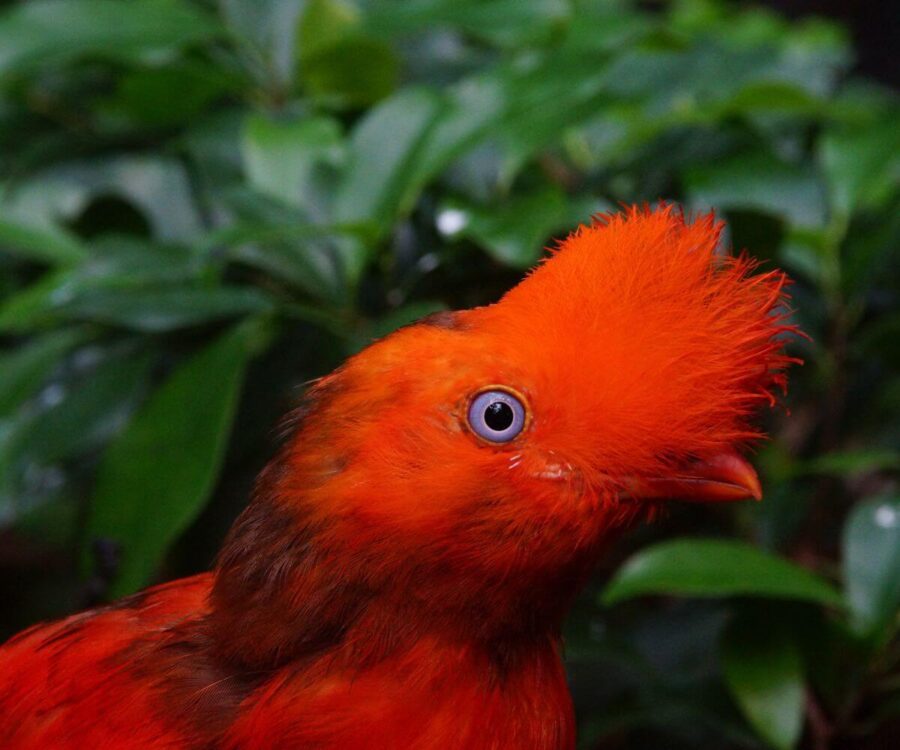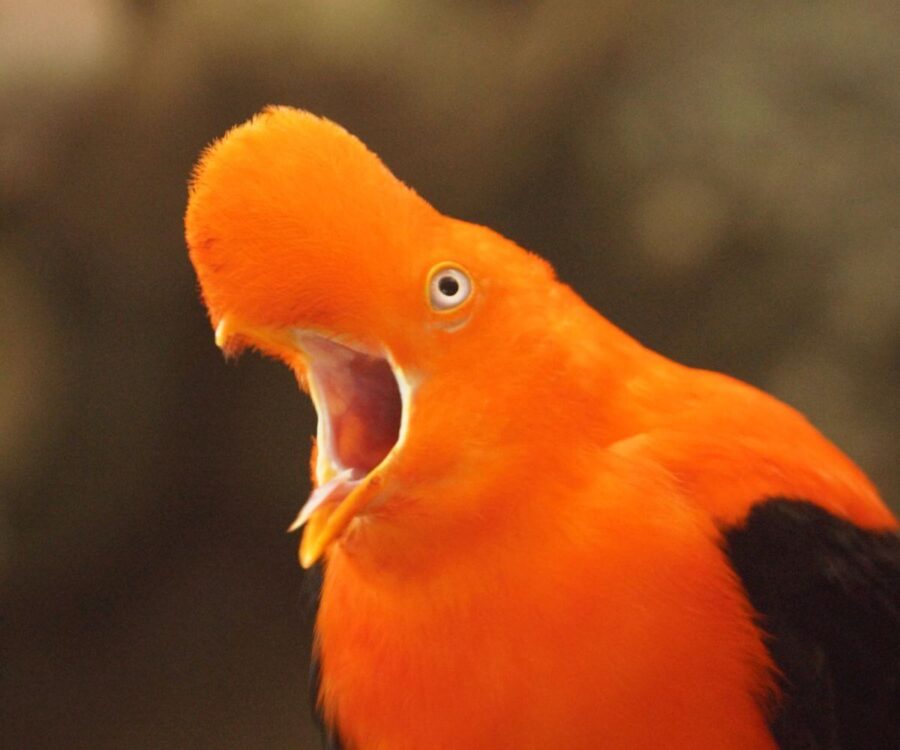The cock-of-the-rock (Rupicola peruvianus) is the national bird of Peru, representing the Andean and Amazonian biodiversity. It stands out for its striking plumage and unique behavior, making it a fascinating species for those looking to explore Peruvian wildlife. This guide provides everything you need to know about the famous cock-of-the-rock.
Table of Contents
The cock-of-the-rock, also known as "tunqui" in Quechua, has the scientific name Rupicola peruvianus. It is associated with rocky habitats where it lives. Other common names include "cock-of-the-rock" in English, due to its habit of nesting on rocky canyon walls and riverbanks.

The cock-of-the-rock is mainly found in the mountainous regions of the Andes, including countries like Peru, Bolivia, Ecuador, and Colombia. This species prefers cloud forests and high jungle regions located between 500 and 2,400 meters above sea level. The dense and humid environment of the jungle provides the perfect refuge for hiding and reproducing.
It inhabits forests, national parks, and nature reserves such as the Manu National Park, the Tambopata Reserve, and the Yanachaga-Chemillén National Park. These areas are ideal due to their dense and humid conditions, located between 500 and 2,400 meters above sea level.
It lives on rocky walls, ravines, and streams surrounded by dense vegetation. This environment is perfect for nesting, performing courtship rituals, and feeding, while also providing protection from predators.
The male is known for its bright orange-red plumage, while the females have brown-toned plumage to better camouflage with their surroundings. Males also feature a distinctive semicircular crest on their heads, which rises during courtship displays.
The most notable feature of this species is its colorful plumage and courtship behavior. Males gather in groups to perform rituals known as "lek," competing with dances and displays to attract females.

These birds exhibit marked sexual dimorphism. Males display bright coloration and a prominent crest, while females have brown plumage that helps them camouflage while protecting the nests. These differences are part of their reproductive strategy.
The cock-of-the-rock is territorial and social, especially during the mating season. It produces harsh, metallic sounds used in courtship rituals to attract females.
This species emits chirps and whistles during its displays in the leks. These sounds are primarily used to attract females and also serve to mark territory.
During the breeding season, males produce special vocalizations that are highly attractive to females. This mating song is accompanied by rhythmic movements and plays a crucial role in reproductive success.

The cock-of-the-rock is primarily frugivorous, meaning it mainly feeds on fruits. It also consumes insects and plays a vital role in seed dispersal, contributing to forest regeneration.
Although this species is not critically endangered, it faces threats such as deforestation and illegal hunting. According to the IUCN, it is considered vulnerable in some regions due to habitat fragmentation, prompting numerous awareness campaigns.
To conserve the cock-of-the-rock, it is essential to protect natural areas, educate about its importance, and support local communities. Additionally, responsible ecotourism helps generate resources for protected areas and promotes its preservation.
The cock-of-the-rock is known for its group courtship behavior, but it also holds significant cultural and ecological importance.
It plays a vital role in the ecosystem by dispersing seeds, helping to maintain forests, serving as a positive ecological indicator, and contributing significantly to biodiversity.
